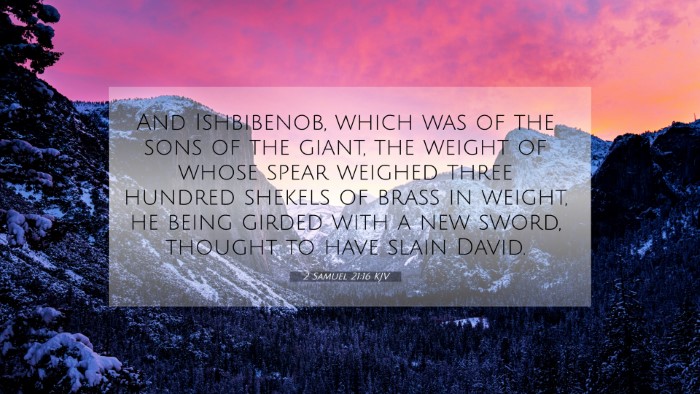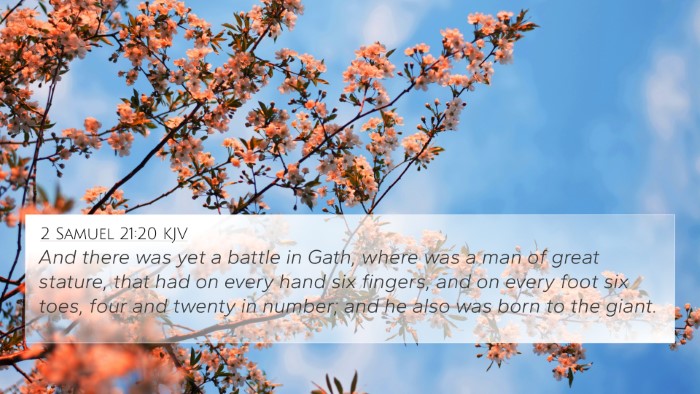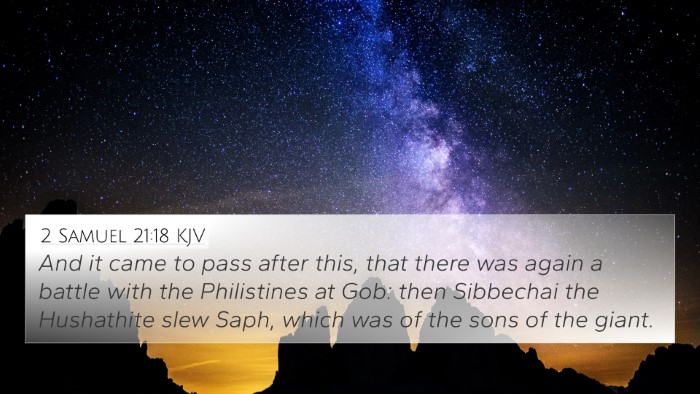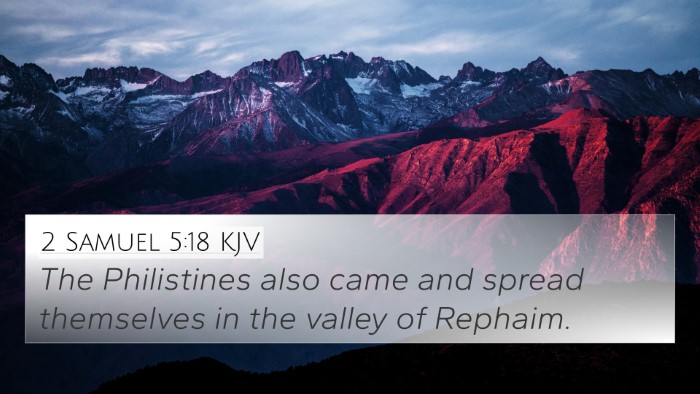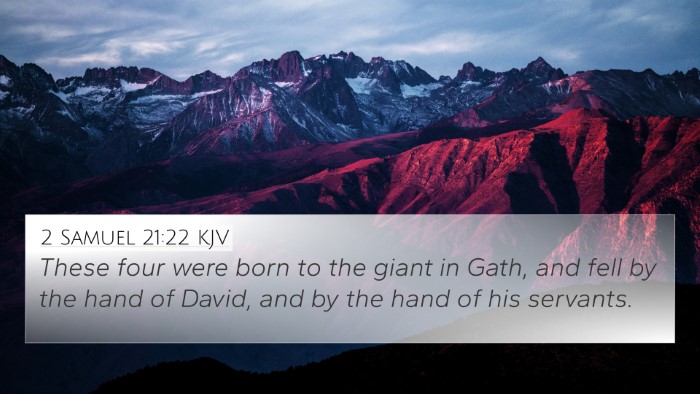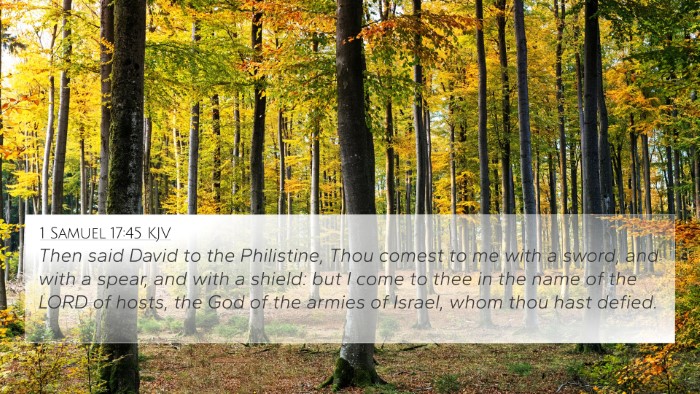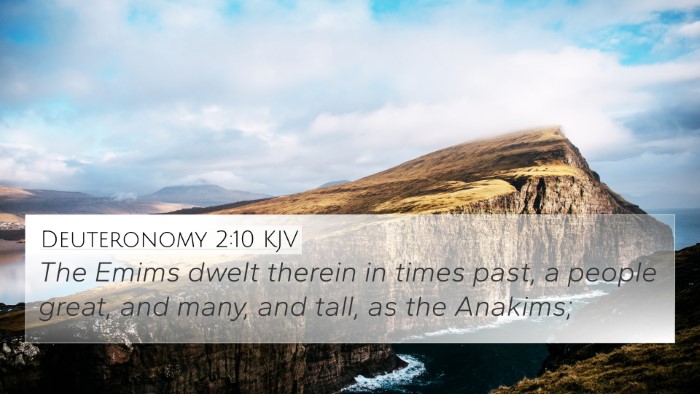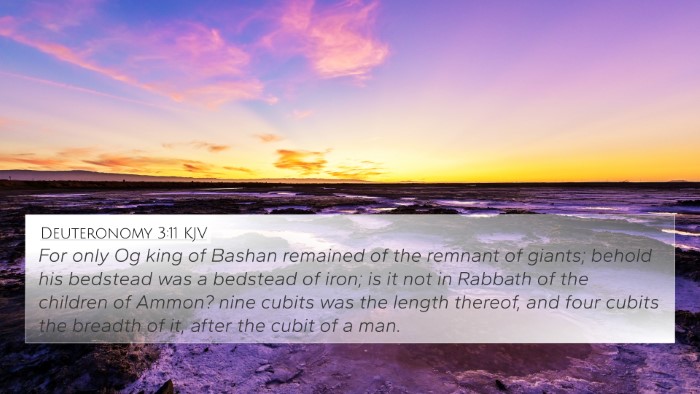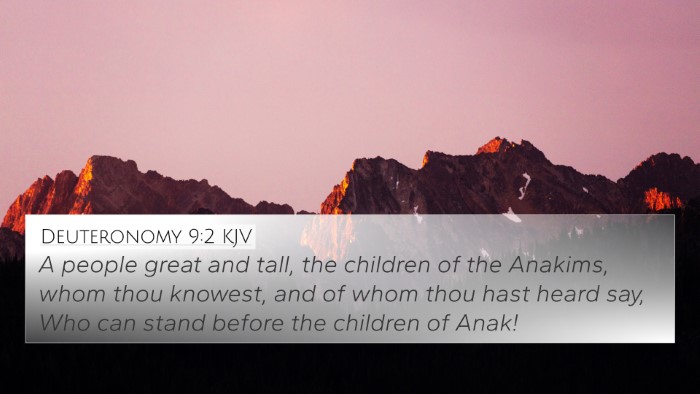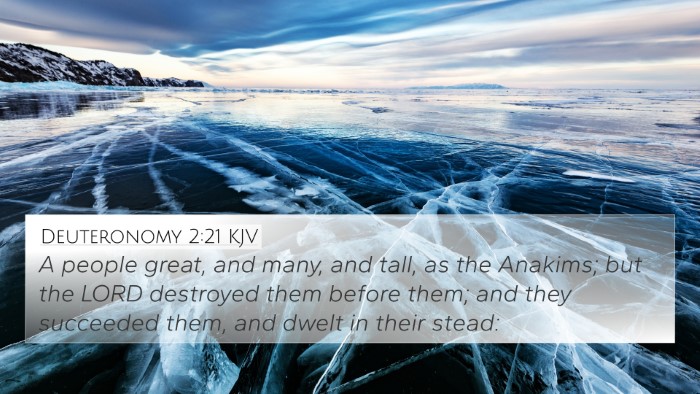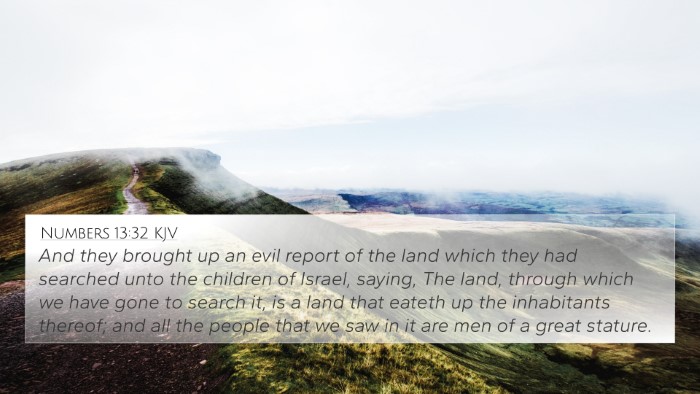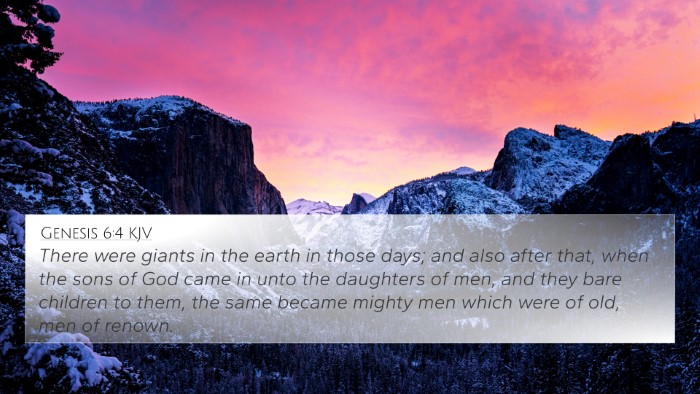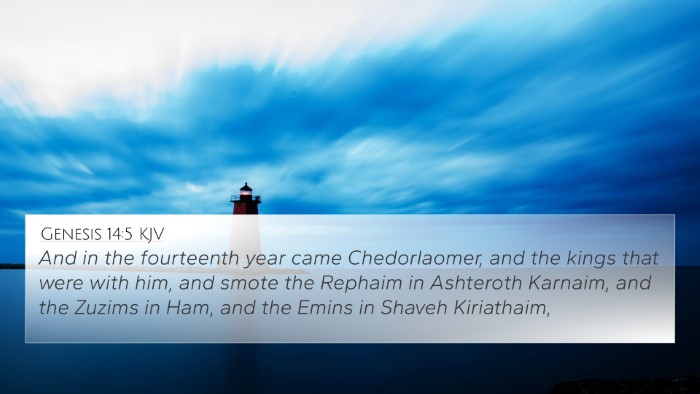Understanding 2 Samuel 21:16
The verse 2 Samuel 21:16 states, "And Ishbi-benob, which was of the sons of the giant, the weight of whose spear weight six hundred shekels of brass, which was girded with a new sword, thought to have slain David." This passage encompasses significant themes of bravery, conflict, and the ongoing challenges faced by David during his reign, specifically relating to his encounters with formidable enemies.
This verse serves as a reminder of the continual strife and the bravery displayed by both David and his adversaries. The character Ishbi-benob, a descendant of the giants, symbolizes the enduring threats that David faced, indicating that the history of conflict does not easily relent. Below is an analysis of this verse, drawing insights from prominent public domain commentaries.
Commentary Insights
-
Matthew Henry:
Henry emphasizes the persistent nature of David's adversaries despite his victories in the past. He notes that Ishbi-benob represents a physical manifestation of the enemies of God's people and serves to remind believers that they must remain vigilant. Henry describes Ishbi-benob's might, with a spear bearing a staggering weight, illustrating how formidable the forces against God's anointed can be.
-
Adam Clarke:
Clarke elaborates on the identity of Ishbi-benob, connecting him to the giants defeated by David and emphasizing the continued lineage of threats that David faces. He discusses the symbolic significance of heavy armor and weaponry, indicating the seriousness of the battle against evil forces. Clarke also highlights the spiritual implications, suggesting that such battles are reflective of the struggles between good and evil seen throughout the Scriptures.
-
Albert Barnes:
Barnes draws attention to the significance of David's weakened state. He points out that Ishbi-benob's intention to slay David shows that even the greatest leaders are vulnerable. He urges readers to recognize that trials and tribulations can come even after significant victories and to rely on God's strength during such times.
Thematic Analysis
The verse encapsulates several critical themes found throughout the Bible:
- Bravery in Adversity: David’s battles often symbolize the trials that individuals face, reminding believers of the importance of faith and courage in the face of overwhelming challenges.
- Symbolism of Giants: The giants in David’s life often represent sin, temptation, or challenges that follow believers throughout their spiritual journey.
- Legacy of Conflict: The reference to Ishbi-benob indicates that enemies can emerge from within one’s lineage or history, teaching lessons about vigilance and preparedness.
Cross-References
This verse relates to numerous other scriptures, reinforcing its themes and lessons. Below are some notable cross-references:
- 1 Samuel 17:4: The story of Goliath, a giant whom David initially defeated, representing profound challenges.
- 2 Samuel 21:15: Continuing the narrative of David’s battles against the Philistines, showing the ongoing nature of conflict.
- Psalm 27:1: Highlights how the Lord is a light and salvation, which echoes the implicit plea for divine assistance in battle.
- 1 Chronicles 20:4-8: Further details the accounts of giants and the continued warfare in David's time.
- Hebrews 11:32-34: Refers to mighty acts performed by faith, including victories in battles, connecting to David's story.
- Romans 8:37: Affirms that believers are more than conquerors through Christ, reflecting the ultimate victory over adversaries.
- 2 Timothy 4:7: Paul’s declaration of having fought the good fight resonates with David’s legacy of warfare and perseverance.
Conclusion
In summary, 2 Samuel 21:16 serves as a powerful reminder of the spiritual battles that believers encounter. The varied insights from respected biblical commentaries enrich our understanding of this verse while connecting it to a broader scriptural dialogue. By recognizing these connections and themes, believers can draw strength and persevere through their unique challenges.
Further Study
For deeper exploration of this text and its connections to other scriptures, utilizing tools such as a Bible concordance or a Bible cross-reference guide can be beneficial. Engaging in cross-reference Bible study methods will help identify links between various portions of Scripture, fostering a comprehensive understanding of God’s Word.


